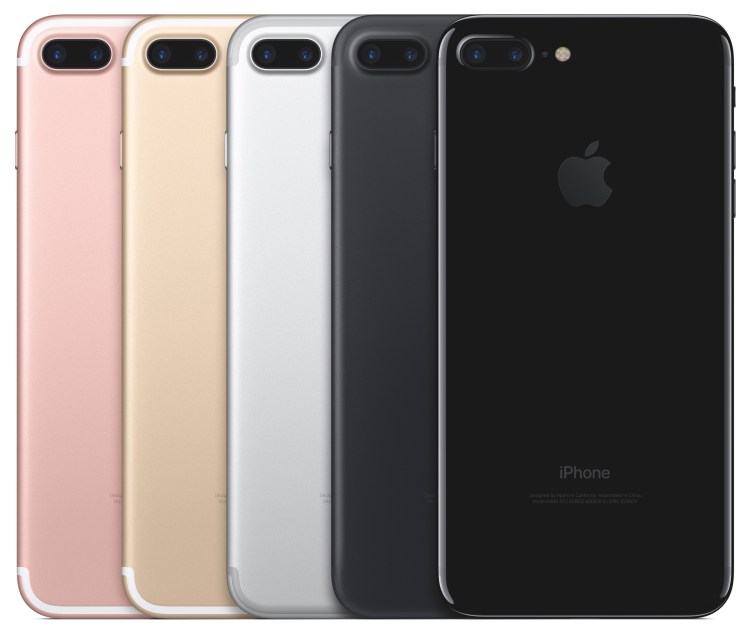Apple’s decision not to share first weekend sales of the new iPhones this year has set off a wave of chatter and disappointment. But lost among the reactions is the reality that these numbers have been meaningless for several years now.
Of course, that didn’t stop much of the tech world from holding its breath that first Monday after sales of the new version started. Journalists spent the day staring at their inboxes waiting for the press release from Apple to land and inevitably trumpet how a new first-weekend sales record was set.
Fundamentally, the problem was that the year-year to comparisons were almost never apples to apples. This was something pretty much everyone knew but at the same time decided to generally ignore.
For instance, in 2012, Apple announced a new first-weekend sales record of 5 million, thanks to the iPhone 5. The new iPhone was only available in 9 countries over that first weekend in 2012.
The next year, with the iPhone 5s and 5c, Apple announced a record 9 million phones had been sold. This time, the new iPhones were available in 11 countries, including China, which no doubt inflated the number by a couple of million.
But that year, while noting that the company had not been able to meet demand for the iPhone 5s (thus crimping sales numbers) it was silent about the 5c, its multi-colored plastic-encased phone. Indeed, while the 5s had disappeared from stores, the 5c was seen in abundance at retailers like Best Buy and wireless carriers stores.
That year, analysts began speculating more openly about something they called the “sell-through” numbers. In fact, when Apple counts a phone as “sold,” it counts it in two ways. The first is when someone buys one from an Apple Store or online from Apple. But the second is when it delivers a phone to a wireless or retail partner. Once Best Buy or AT&T takes an iPhone, it is considered sold.
This was always the case, and Apple is quite transparent about this in all of its filings. But with the iPhone 5c sitting on shelves, analysts were trying to better understand just how many had actually ended up in the hands of customers (versus partners), the so-called “sell-through” rate. In any case, we never really know the sell-through rate, which is another reason the sales record number tells us less than we think it does in terms of a new iPhone’s popularity.
In 2014, Apple unveiled the iPhone 6 and 6 Plus. And it announced another new record of 10 million phones sold over the first weekend in 10 markets. A new record, it seemed, but just barely. Were the bigger iPhones duds?
Hardly. It turns out this record dramatically understated just how popular these phones would be. In part, that was because the new iPhones would not be available in China until October. By the time the holiday quarter ended that year, we learned that Apple had sold 74.5 million iPhones, up from 51 million the year before. The new phones were monster hits.
With the iPhone 6s and 6s Plus in 2015 came another new record: 13 million iPhones sold over the first weekend. But this time the new phones were available in 12 markets, including China, something obvious that everyone but Apple acknowledged. In this case, the apparent record overstated the popularity of the new phones. Over the course of the next full year, Apple would report declining sales of the iPhone for the first time ever.
And that brings us to this month. Preorders of the new iPhones start today, and actual sales start September 16. The new iPhones will be available in 29 countries the first weekend, including China. This is a big leap that would have made comparisons difficult and made the first-weekend numbers useless as an indicator.
If Apple did set a record, we’d have to wonder if it was simply because of the number of countries included? Were the phones actually sold to customers or sitting on a shelf somewhere? And how does that “sell-through” compare to a year ago? Even if Apple released the number, we wouldn’t have enough detail to know what it really means, good or bad. And if it was flat, or down, well, Apple would likely get hammered. Essentially, there was likely no upside and only downside to releasing the numbers.
The surprise over Apple’s decision is understandable if misguided. Apple has only itself to blame for setting the expectations around its first-weekend sales, by hailing a new record each year. Shutting this tradition down was bound to draw scrutiny.
If you want to really know how the new phones are doing, you’ll have to have patience, something in short supply in Silicon Valley. It’s hard to wait, because everyone would prefer to get an easily digestible number right away and make broad, sweeping judgments about Apple.
Even when Apple reports its results for this quarter in October, we won’t know much. The new iPhones are going on sale earlier than usual, which means this current 4th quarter of 2016 should get a bump, while likely pulling away some sales that would have otherwise happened in the holiday quarter.
To get a clear sense of the new iPhone’s impact, it’s best to wait for the company’s earnings in January when the new phones have been available for a full quarter. Then we can all commence with the sweeping judgments we’ve been saving up.
VentureBeat's mission is to be a digital town square for technical decision-makers to gain knowledge about transformative enterprise technology and transact. Learn More

